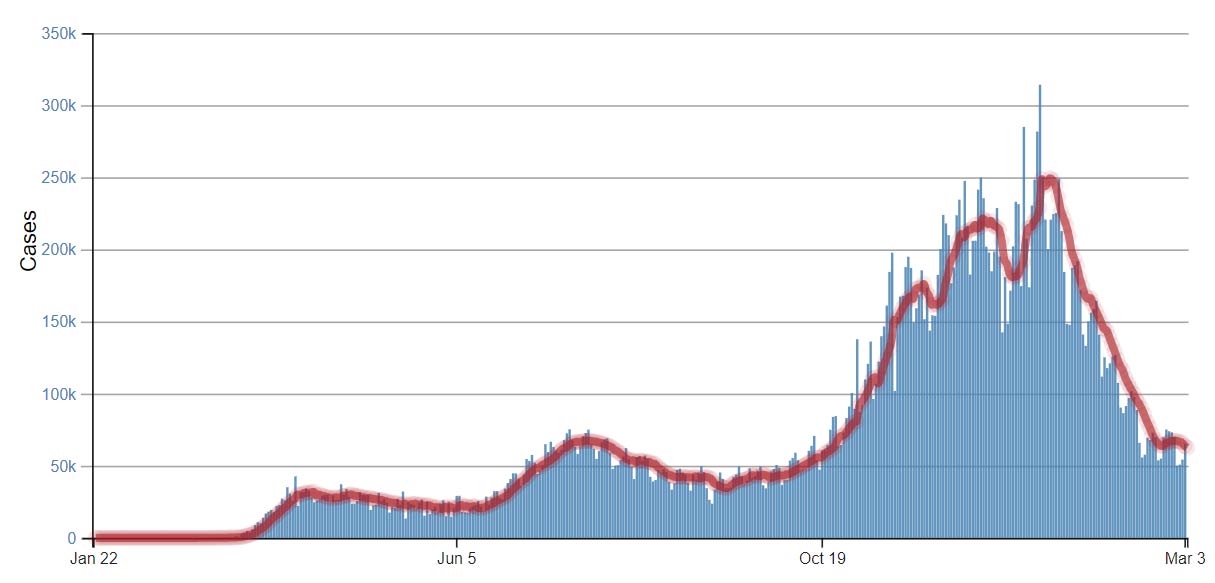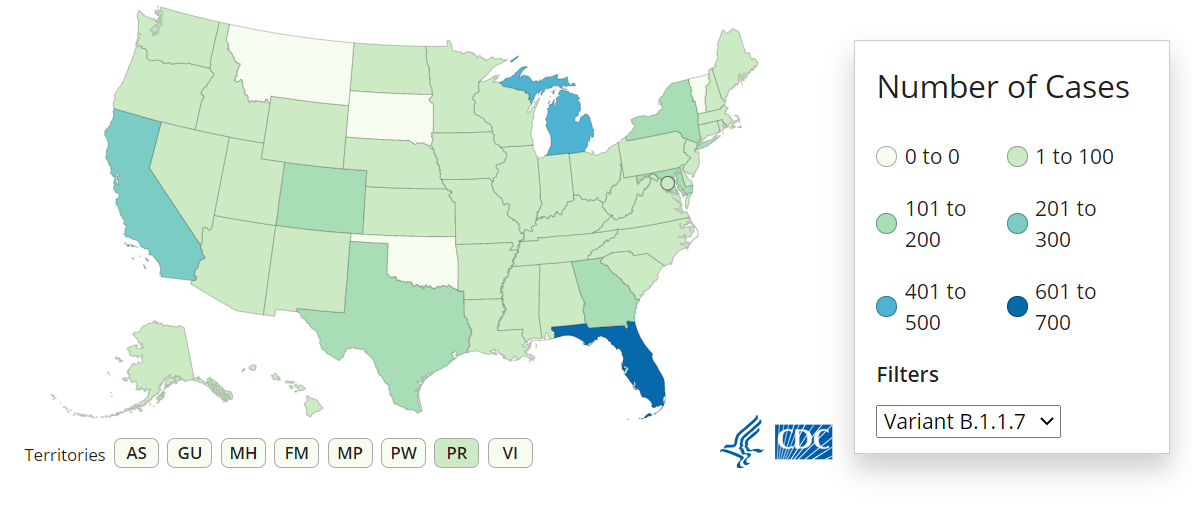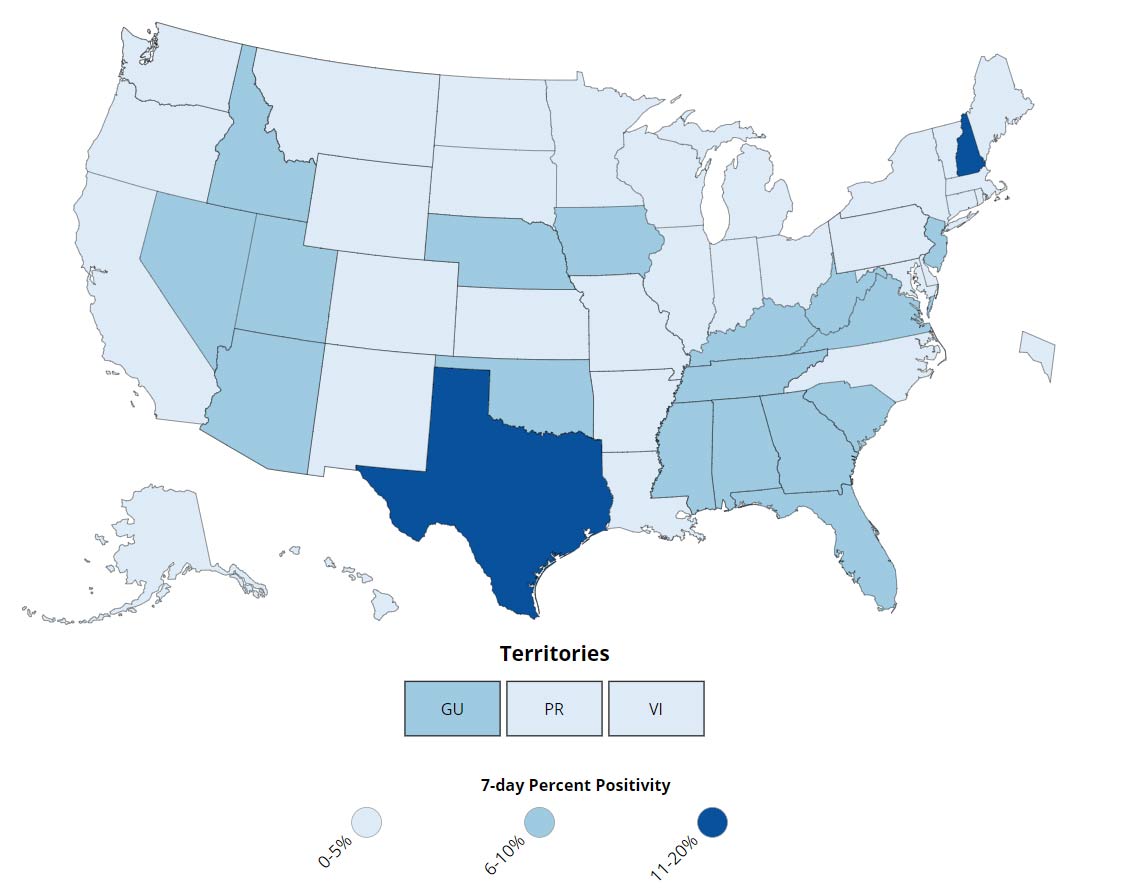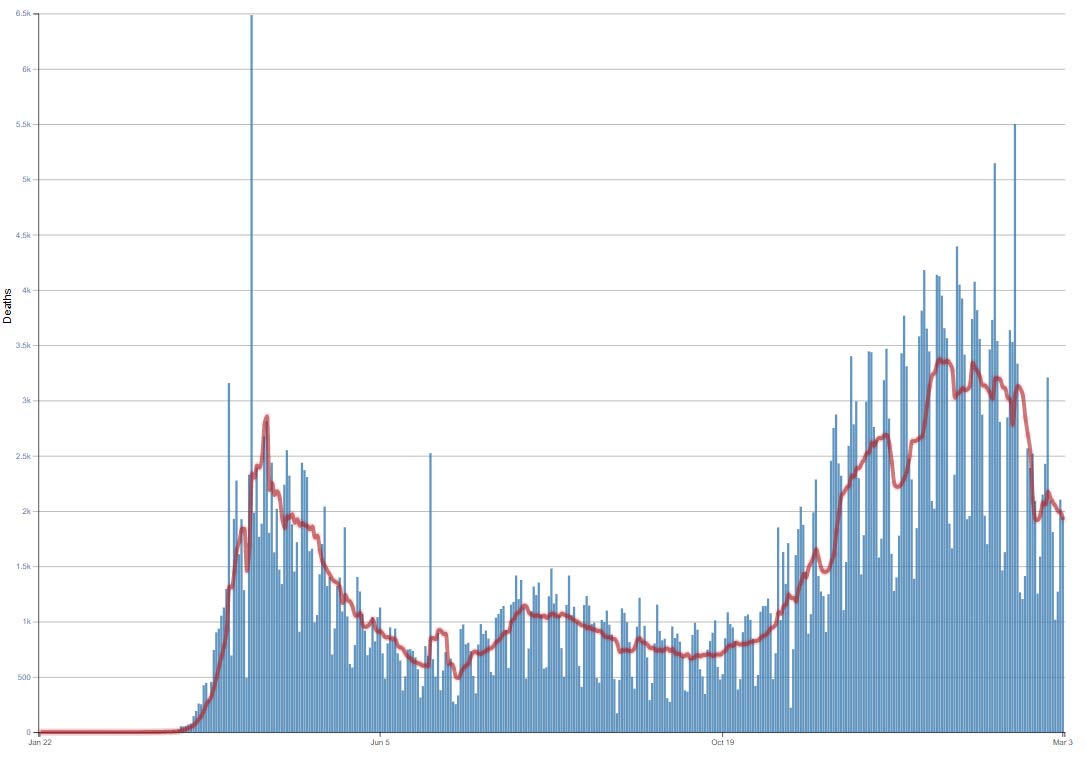Recommendations for Fully Vaccinated People
COVID-19 Homepage

An Effective New Tool in the Toolbox
Vaccines are critical tools for ending the COVID-19 pandemic, and we just got a new one. On February 28, CDC released an official recommendation to use Johnson & Johnson’s Janssen (J&J/Janssen) vaccine, which is safe and effective in preventing severe COVID-19 illness, hospitalization, and death. This vaccine is being distributed now. The J&J/Janssen vaccine protects against COVID-19 in one dose, not two, and can be stored at a standard refrigerator temperature instead of needing colder storage. These advantages can help the vaccine reach most communities and mobile sites, as the supply of vaccines increases.
Vaccinations, wearing a well-fitted mask, and taking other precautions to prevent the spread of COVID-19 can help end the pandemic. We need to use all tools in the toolbox, accelerate vaccination and ensure vaccines are distributed equitably, and learn from our initial successes.
Use all tools in the toolbox. On February 27, 2021, the Food and Drug Administration (FDA) issued an Emergency Use Authorization (EUA) for the J&J/Janssen vaccine. On February 28, 2021, CDC’s Advisory Committee on Immunization Practices (ACIP) issued an interim recommendation for use of the J&J/Janssen COVID-19 vaccine in people 18 years of age and older for the prevention of COVID-19.1 This vaccine is the third COVID-19 vaccine authorized under an EUA for the prevention of COVID-19 in the United States. CDC’s COVID Data Tracker has begun providing data by type of vaccine, which will soon include the J&J/Janssen vaccine.
Accelerate vaccination and ensure equity. Vaccination has continued to increase this week with 16.3% of the total population vaccinated with at least one dose (including 21.2% 18 years of age and older) as of March 4, 2021. CDC provides vaccination data by race and ethnicity, age, and sex. Continued efforts are needed at the national, state and local levels to monitor for and ensure equity in vaccine distribution and administration.
Learn from our initial success. Cases in skilled nursing facilities, for example, have declined up to 80% from the peak in late December. As we enter spring, we need to stay focused on reducing spread in our communities. This means we need to continue to practice proven prevention strategies including wearing a well-fitted mask, staying six feet apart from people we don’t live with, avoiding gatherings, washing hands often, staying home when sick, and getting vaccinated when the vaccine is available to you.
Reported Cases
Beginning on January 11, the 7-day average of newly reported cases declined for 43 consecutive days. There was a brief increase between February 27 and March 1, 2021; and as of March 2, the 7-day average of new cases began to decline again. There has been an overall decline of 74.9% of the 7-day moving average since the highest 7-day average of 249,360 on January 11, 2021. On March 3, there was a 5.7% decrease in the 7-day average number of daily cases reported compared with the prior week, which provides an encouraging sign of continued progress. Even with these declines, the 65,424 cases reported on March 3 remains much higher than what was seen during the first peak in the pandemic on April 6, 2020 of 42,597 cases.
Daily Trends in COVID-19 Cases in the United States Reported to CDC

7-Day moving average
65,424
New Cases Reported
65,424
New Cases Reported
62,555
Current 7-Day Average**
62,555
Current 7-Day Average**
28,580,198
Total Cases Reported
28,580,198
Total Cases Reported
66,306
Prior 7-Day Average
66,306
Prior 7-Day Average
249,360
Peak of 7-Day Average*
249,360
Peak of 7-Day Average*
-5.7%
Change in 7-Day Average since Prior Week
-5.7%
Change in 7-Day Average since Prior Week
*Highest peak for 7-day average (January 11, 2021).
** The current 7-day average of new cases is impacted by a historical correction of 8,585 cases; 2,990, 1,840, and 1,641 historical cases were reported by Texas on February 27, March 1 and March 3, 2021, respectively; and Alabama reported a historical correction of 2,114 cases on March 3, 2021. The 7-day average number of new cases (excluding historical cases reported in the past two weeks) decreased by 7.5% to 61,329 new cases per day compared to the previous 7-day average of 66,306.
SARS-CoV-2 Variants
CDC is closely tracking variants of SARS-CoV-2, the virus that causes COVID-19. Three variants of concern have been detected in the United States: B.1.1.7, B.1.351, and P.1. A total of 2,672 B.1.1.7 variant cases have been reported in 48 jurisdictions. Sixty-eight cases attributed to B.1.351 in 17 jurisdictions and 13 cases attributed to P.1 in seven states have also been detected in the United States. CDC and partners are increasing the numbers of specimens sequenced in laboratories around the country. The number of variants reported will likely increase as more specimens are sequenced and if the frequency of variants increases. Studies are underway to determine whether variants cause more severe illness or are likely to evade immunity brought on by prior illness or vaccination. CDC published two reports this week on variants. 2,3
Variant
Variant
Variant
Reported Cases in US
Reported Cases in US
Reported Cases in US
Number of Jurisdictions with ≥1 Case Reported
Number of Jurisdictions with ≥1 Case Reported
Number of Jurisdictions with ≥1 Case Reported
B.1.1.7
Variant
B.1.1.7
2,672
Reported Cases in US
2,672
48
Number of Jurisdictions with ≥1 Case Reported
48
B.1.351
Variant
B.1.351
68
Reported Cases in US
68
17
Number of Jurisdictions with ≥1 Case Reported
17
P.1
Variant
P.1
13
Reported Cases in US
13
7
Number of Jurisdictions with ≥1 Case Reported
7
Testing
The percent of COVID-19 RT-PCR tests that are positive (percent positivity) continues to decline. The 7-day average of percent positivity from tests is now 4.5%. The 7-day average test volume for February 19-25, 2021 was 1,212,844, up 10.5% from 1,097,940 the prior 7 days.
337,114,841
Total Tests Reported
337,114,841
Total Tests Reported
1,212,844
7-Day Average Test Volume
1,212,844
7-Day Average Test Volume
4.5%
7-Day Average
% Positivity
4.5%
7-Day Average
% Positivity
-13.4%
Change in 7-Day
% Positivity
-13.4%
Change in 7-Day
% Positivity
COVID-19 Viral (RT-PCR) Laboratory Test 7-day Percent Positivity by State/Territory
Vaccinations
The U.S. COVID-19 Vaccination Program began December 14. As of March 4, 2021, 82.6 million vaccine doses have been administered. Overall, about 54.0 million people, or 16.3% of the U.S. population, have received at least one dose of vaccine. About 27.8 million people, or 8.4% of the U.S. population, have received two doses of vaccine. As of March 4, the 7-day average number of administered vaccine doses reported to CDC per day was 2.0 million, a 36% increase from the previous week. Data by type of vaccine, which will soon include the J&J/Janssen vaccine, is available on CDC’s COVID Data Tracker.
82,572,848
Vaccines Administered
82,572,848
Vaccines Administered
54,035,670
People who received 1 or more doses
54,035,670
People who received 1 or more doses
27,795,980
People who received 2 doses
27,795,980
People who received 2 doses
Daily Change in Number of COVID-19 Vaccinations in the United States Reported to CDC

7-Day moving average
New Hospital Admissions
Hospital admissions of patients with confirmed COVID-19 decreased 67% from the national 7-day average peak of 16,540 admissions on January 9, 2021 to a 7-day average of 5,490 admissions on March 2, 2021. The average number of daily admissions fell by 14.8%, compared to the previous week.
5,390
New Admissions
5,390
New Admissions
5,490
Current 7-Day Average
5,490
Current 7-Day Average
1,814,606
Total New Admissions
1,814,606
Total New Admissions
6,446
Prior 7-Day Average
6,446
Prior 7-Day Average
16,540
Peak 7-Day Average
16,540
Peak 7-Day Average
-14.8%
Change in 7-Day Average
-14.8%
Change in 7-Day Average
Daily Trends in Number of New COVID-19 Hospital Admissions in the United States

The most recent data in the vertical gray bar are provisional and should be interpreted with caution.
Deaths
In recent weeks, the number of COVID-19 deaths has fluctuated. However, there has been an overall decline of 43.1% of the 7-day moving average since January 13, 2021. As of March 3, 2021, a total of 517,224 COVID-19 deaths were reported. The current 7-day average of deaths is 1,921 deaths, a 6.7% decrease from the previous 7-day average of 2,060 daily deaths.
1,947
New Deaths Reported
1,947
New Deaths Reported
1,921
Current 7-Day Average**
1,921
Current 7-Day Average**
517,224
Total Deaths Reported
517,224
Total Deaths Reported
2,060
Prior 7-Day Average
2,060
Prior 7-Day Average
3,378
Peak of 7-day Average*
3,378
Peak of 7-day Average*
-6.7%
change in the 7-Day Average Since the Prior Week
-6.7%
change in the 7-Day Average Since the Prior Week
Daily Trends in Number of COVID-19 Deaths in the United States Reported to CDC

7-Day moving average
*The most recent (highest) peak in the 7-day average of new deaths (Jan 11, 2021).
**The current 7-day average of new deaths is impacted by a historical correction of 806 deaths reported by California on February 25, 2021. The 7-day average number of new deaths (excluding historical deaths reported in the past two weeks) decreased by 9.8% to 1,877 new deaths per day compared to the previous 7-day average of 2,060.
- The Advisory Committee on Immunization Practices’ Interim Recommendation for Use of Janssen COVID-19 Vaccine — United States, February 2021Transmission of SARS-CoV-2 in K-12 schools
- First Identified Cases of SARS-CoV-2 Variant P.1 in the United States — Minnesota, January 2021
- Travel from the United Kingdom to the United States by a Symptomatic Patient Infected with the SARS-CoV-2 B.1.1.7 Variant — Texas, January 2021
The Coronavirus Disease 2019 (COVID-19)-Associated Hospitalization Surveillance Network (COVID-NET) is an additional source for hospitalization data collected through a network of more than 250 acute-care hospitals in 14 states (representing ~10% of the U.S. population). Detailed data on patient demographics, including race/ethnicity, underlying medical conditions, medical interventions, and clinical outcomes, are collected using a standardized case reporting form.
CDC’s website also provides new data views such as county-specific summaries (under “Your Community” in Data Tracker), vaccination trends (under “Your Community” in Data Tracker), and information on SARS-CoV-2 variants.




